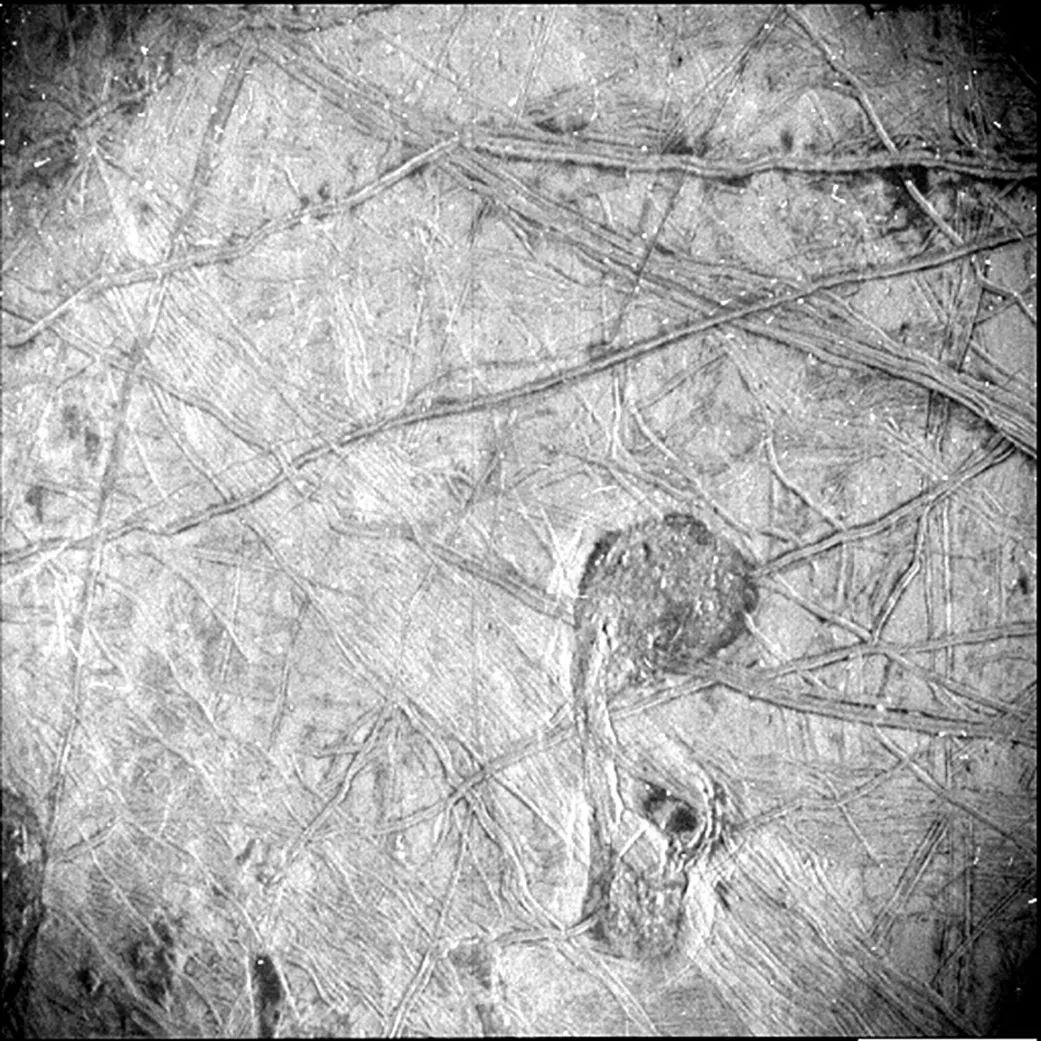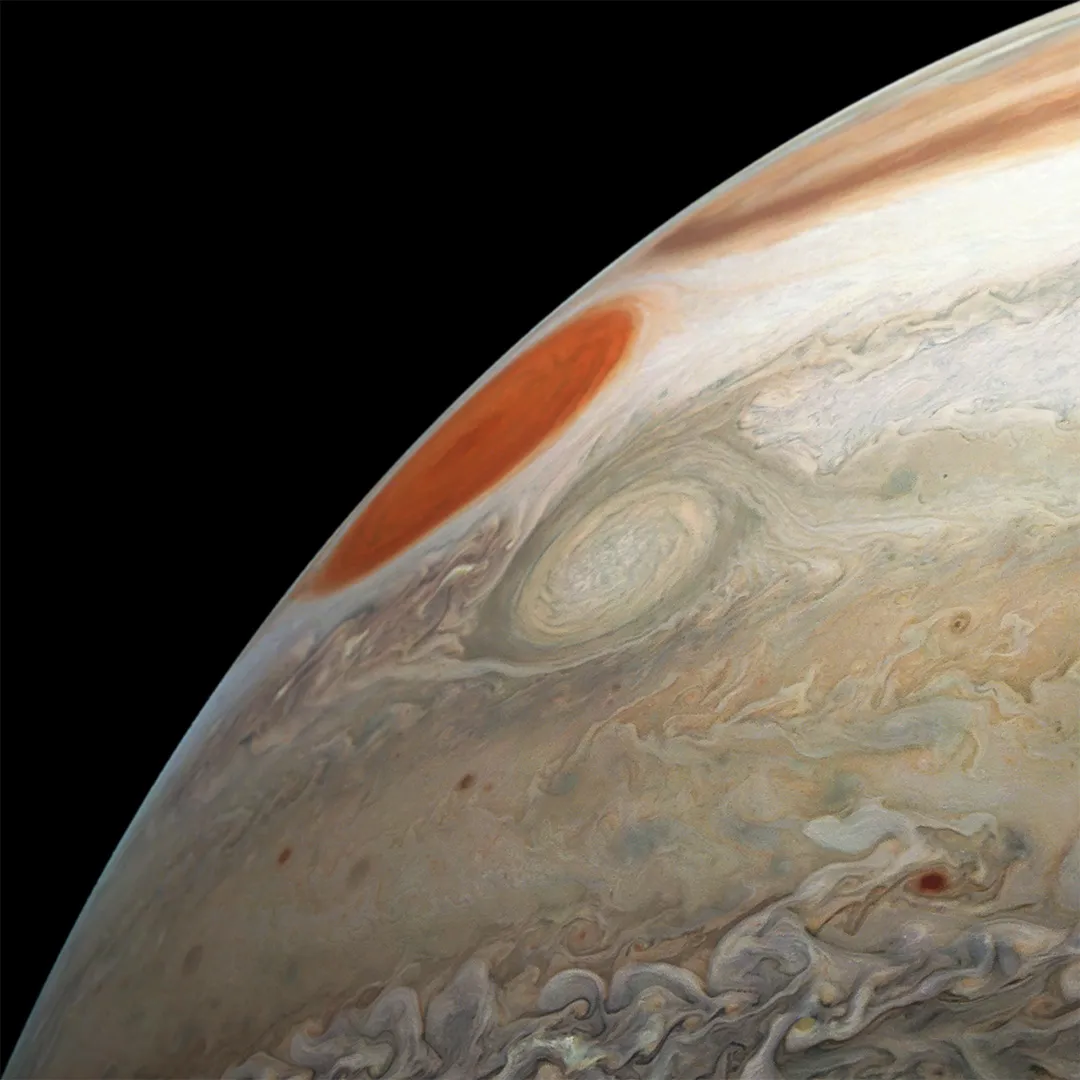An incredible image of Jupiter's icy moon Europa has been captured by NASA's Juno spacecraft during a close flyby.
The image is the highest-resolution image the Juno probe has ever taken of a specific portion of the icy moon.
It was captured using Juno's Stellar Reference Unit (SRU) during the spacecraft's flyby of Europa on 29 September 2022.

The new Europa image covers an area of about 150km x 200km on the surface of the moon and shows incredible streaks and grooves, along with features called double ridges, which are pairs of lines running parallel to one another.
These double ridges are raised features in the icy crust of the Jovian moon.
At the top right of the image can be seen dark patches, and NASA says these could be a sign of material erupting from below the surface.
Indeed, Europa is thought to have an subsurface ocean beneath its frozen crust, making it one of the prime places in the Solar System to search for signs of habitable conditions, or even life itself.

Also visible in the image are tiny white speckles spread across the field of view.
These are signs of high energy particles generated by extreme radiation surrounding Europa.
This latest image is part of a ream of data captured by Juno as it flew by Europa at a distance of just 412km on 29 September, travelling at a speed of 24km per second.
It was captured during nighttime on that particular part of Europa, but the whole scene is lit by sunlight reflecting off Jupiter's cloudtops - an effect known as 'Jupiter shine'.

"This image is unlocking an incredible level of detail in a region not previously imaged at such resolution and under such revealing illumination conditions," says Heidi Becker, the lead co-investigator for the SRU.
"The team’s use of a star-tracker camera for science is a great example of Juno’s groundbreaking capabilities. These features are so intriguing. Understanding how they formed – and how they connect to Europa’s history – informs us about internal and external processes shaping the icy crust."
This latest image follows another image of Europa captured during the flyby, which was released by NASA on 29 September 2022.

That image shows a wider view of Europa and was captured from a distance of 352km. One particular feature of note is the oblong crater near the moon's terminator - the dividing line between day and night.
This may have been caused by an impact.
NASA's Juno mission launched on 5 August 2011 and arrived at Jupiter on 4 July 2016.
Since then it has been sending back amazing images of the worlds of the Jovian system, including Jupiter itself and features such as the enormous, raging storm known as the Great Red Spot.

